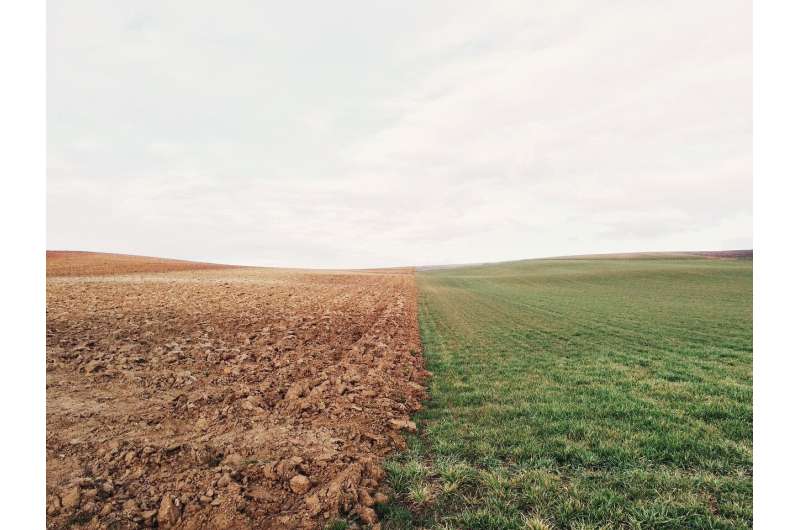Covering soil substrate on sand surface helps colonization and development of artificial biological soil crusts

Biological soil crusts (BSCs), also called "living skin" on the soil surface, are a community of interacting autotrophic and heterotrophic organisms, which are found in many low-productivity ecosystems around the world.
In recent years, artificial BSCs have become one of the most promising biotechnological strategies for preventing soil erosion and restoring soil functionality in degraded drylands. However, how to quickly and massively cultivate BSCs and its field colonization method is the technical bottleneck of large-scale use of this achievement.
In a study published in Soil & Tillage Research, researchers from the Northwest Institute of Eco-Environment and Resources (NIEER) of the Chinese Academy of Sciences (CAS) investigated the effects of four soil substrates collected from the southeast edge of the temperate Tengger Desert in northern China on the colonization and development of artificial BSCs.
They tested how clay barrier methods influenced the establishment of artificial BSCs in a natural desert environment, evaluated the effects of different soil substrate fine material and nutrient contents on the colonization and development of artificial BSCs and selected the ideal soil substrate used to cultivate artificial BSC organisms in temperate desert ecosystems.
Results indicated that covering sand with soil substrates improved BSC recovery rates in the field conditions. Covering sand with soil substrates created more ideal soil habitats because soil substrates have higher sand surface stability, greater initial finer material content and greater nutrient content, and delayed soil surface wetness duration than sandy substrates.
Besides, considering the scarcity of soil resources and the value of reusing soil resources, the researchers suggested that left-over soils from dredged irrigation channels and abandoned farmlands could provide a good substrate to culture BSC inoculum material.
This study provides potential materials for large-scale ecological restoration projects in temperate dryland regions in the future.
More information: Yang Zhao et al, Effects of covering sand with different soil substrates on the formation and development of artificial biocrusts in a natural desert environment, Soil and Tillage Research (2021). DOI: 10.1016/j.still.2021.105081
Provided by Chinese Academy of Sciences




















